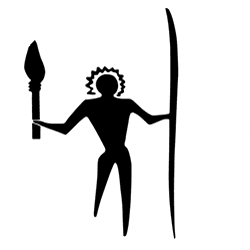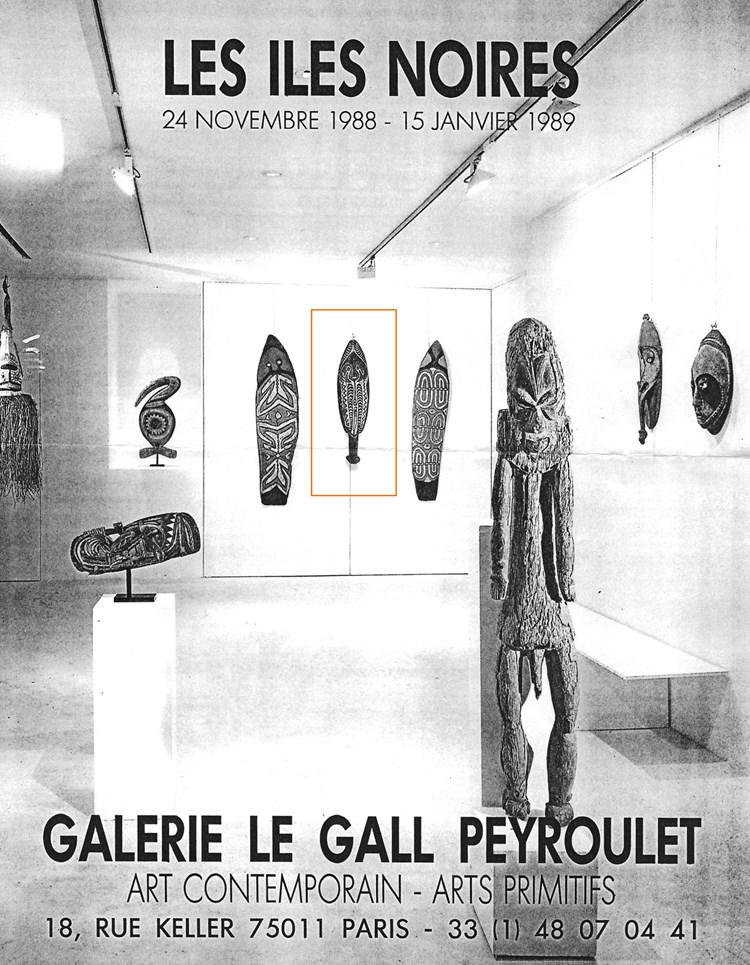GOPE BOARD
Rare Ngope or hoháo (also: gope / tihi ebiha / kwoi) an ancestral plate depicting a stylized ancestral hero. Carved in low-relief and champlevé, these boards are the representation and "abode" of the ancestors of the clan. A certain number seem to go beyond the generic stage to be personifications of persons who have had a physical existence and are named. Here the ancestor is depicted in a recognizable form (legs) and gives us to think that it is a named Ngope. The large head, whose face is composed of bird's head motifs, surmounts a long pair of legs (or arms) with the feet (or hands) turned outwards at the ends. Between these two appendages we can see a circled plug (anus or navel) and further down a long and pointed form (penis or weapon?). The legs are framed by two long zigzags that originate on either side of the headdress. The board unusually ends with a large pommeled handle. Large Ngope planks like this one are carved, named and presented by the maternal uncle during a young man's initiation and can also be a form of commemoration or reward for a warrior in recognition of a battle achievement. Preserved and displayed in the clan's section inside the Mens House, these boards are consulted during raids against the enemy so that the spirits residing in the Ngope precede the attackers and weaken the enemy.
Elema people, Gulf of Papua, PNG, Melanesia. Wood and pigments with a fine patina of age and use. 126 cm. XIX/XXth century.
Provenance
Provenance: Asher Eskenasy, Paris; then private collection, Netherlands.
Exhibition: The Black Islands. Galerie Le Gall-Peyroulet, Paris, 24/11/1988 - 15/01/1989
Literature:
See : Webb, Virginia-Lee : EMBODIED SPIRITS – GOPE BOARDS FROM THE PAPUAN GULF. Yale University Press; 2016.









